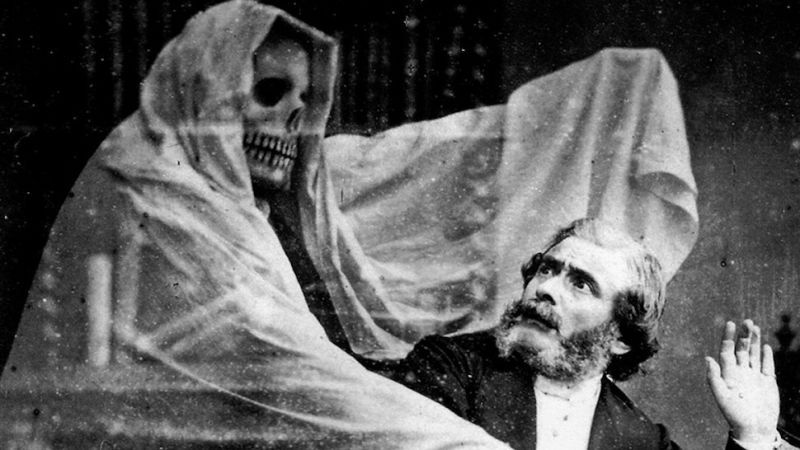
When you hear the term Spirit Photography, your first instinct might be to immediately begin picturing ghost hunting shows on TV, or those orbs you once caught on your camera while touring a haunted house.
But in reality, Spirit Photography usually refers to one certain period of time when photography was still in its infancy, and people were just starting to realize its potential– whether that be for fun or frights.
As you might’ve read in my HJ introductory post, I’m a giant geek for Ghost Adventures. The love-hate I feel for that show knows no bounds– but whether or not it’s fake, whether or not everything out of Zak Bagans’ mouth is just an act, it still intrigues the hell out of me. Particularly when they spend episodes trying out new technology, like this state-of-the-art EVP experiment device designed by Bill Chappell:
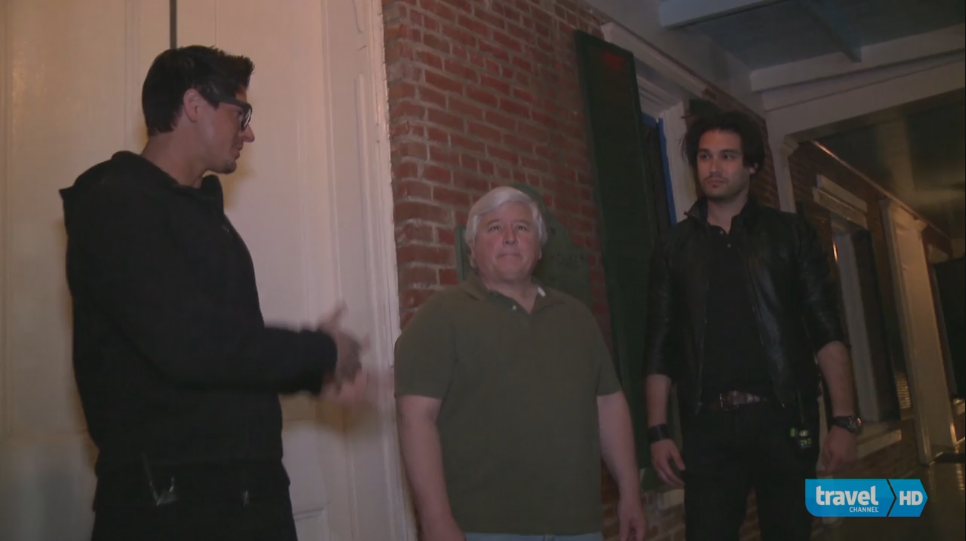
Click Here to Watch The Clip!
(The clip comes from season 9, episode 11 at the Whaley House, which is still an open attraction in Old Town San Diego!)
Of course, set-ups like this would be completely unimaginable to those snapping photos in the 19th and 20th centuries– but at that time, the process of Spirit Photography probably made people feel the same frightened wonder as something like Bill Chappell’s experimental device might make us now.
While there exist a number of different instances of Spirit Photography tricking the masses into believing the paranormal (future posts incoming, wink wink), today we’re going to focus our attention on the emergence, starting with the father of Spirit Photos, William H. Mumler.

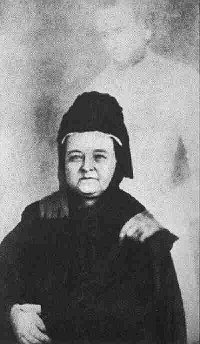
Mumler’s most well-known photograph,
purportedly showing Mary Todd Lincoln with the late
President Lincoln in the background (early 1870s)
In my previous two articles about Post Mortem Photography and the Victorian Era’s Hidden Mothers, we touched a lot on the method of photography that was popular at the time: the daguerreotype.
We also touched on why this method was so problematic: to get a complete photo, the exposure time was excessive, running anywhere from 15 seconds to 30 minutes.
Because of this, we saw how even the slightest movement would cause a person’s face to appear blurry, how it might make their moving-eyes appear as if there was no irises to speak of, why body-posing stands were so necessary (and not for propping up corpses. I know I mention that every time, but it stills shocks me a bit that my whole life is a lie.)
Also then, with such lengthy exposure times, came the opportunity for the double-exposure. This is when two photos are snapped over the same frame of film, and both scenes are exposed onto the same image.
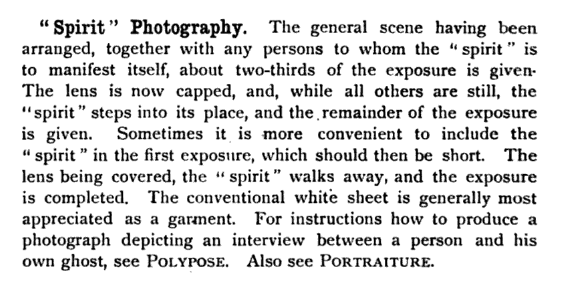
From The Dictionary of Photography For Amateur
And Professional Photographers, by Edward John Wall (1923)
To circle back to Mumler, then, it’s through a double exposure that he created the first Spirit Photograph, occurring when he “accidentally” captured the misty, ghostly image of his late cousin in the background of his self portrait.
While he was perfectly aware that this was not an actual ghost he captured, he also knew that not everyone would feel the same way, and so he began posing as a medium, snapping these “ghost” photos for his patrons, and making a ton of money. Naturally.


Mumler would snap photographs of his customers, only to later doctor the negatives in order to place the person’s “loved ones” into the photograph. And people ate it up– in the beginning.
After making a fortune off of this scam, he was eventually found out when he used the face of a man still very much alive and living in Boston in one of the photos. You can read the actual newspaper article written about his fraud coming to light, and it’s the most incredible thing ever. It includes undercover spies, intrigue, lies, and thrills. People back in the day took themselves so seriously.
Even so with this scandalous truth revealed, the trend of Spirit Photography continued to grow, particularly amongst Spiritualists who believed spirits of the dead were perfectly conscientious of themselves and eagerly sought to communicate with the living.
Whether that communication happened through séances, poltergeist activity, or actual mediums, it all eventually culminated into what we today love and know as Zak Bagans screaming at spirits in the next room. (Sir Arthur Conan Doyle was the Zak Bagans of the 20th century, probably, since he also identified as a spiritualist. Don’t quote me on that.)
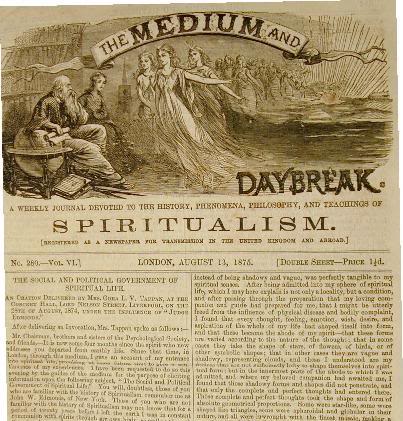
The Medium and Daybreak, also available as an ebook.
The phenomenon of Spirit Photography continued into the early 20th Century, where notable Spiritualists like William Stainton Moses were beginning to hypothesize what made it possible for a spirit to be photographed at all, claiming it was through the spirit’s composition of ectoplasm that they were able to be seen visually.
While today photographers (or, well, anyone) can pick up their iPhone and snap photos to be edited later in photoshop, photographers in the Victorian Era had to get a little more creative.
Not only did they embrace the practice of double exposure, they were also known to utilise “spirits” painted on panes of glass to be photographed through, as well as simply painting on negatives in post-production. It was a lucrative business, and photographers at the time had to keep changing things up to be the next new and exciting thing to lure in potential customers.
Even after the scam that was Spirit Photography finally came to light, though, the trend of double exposures continued. Soon, quirky genre scenes began to come about. Instead of claiming relation with the dead, photographers were beginning to produce these paranormal photos with only theater and entertainment in mind.
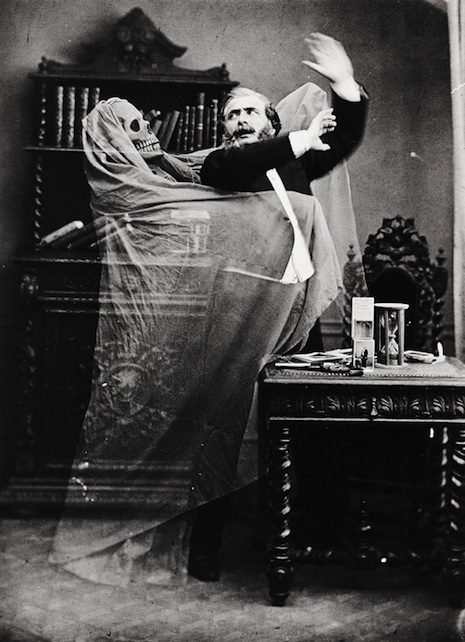
Henri Robin and a Specter, Eugène Thiébault (1863)
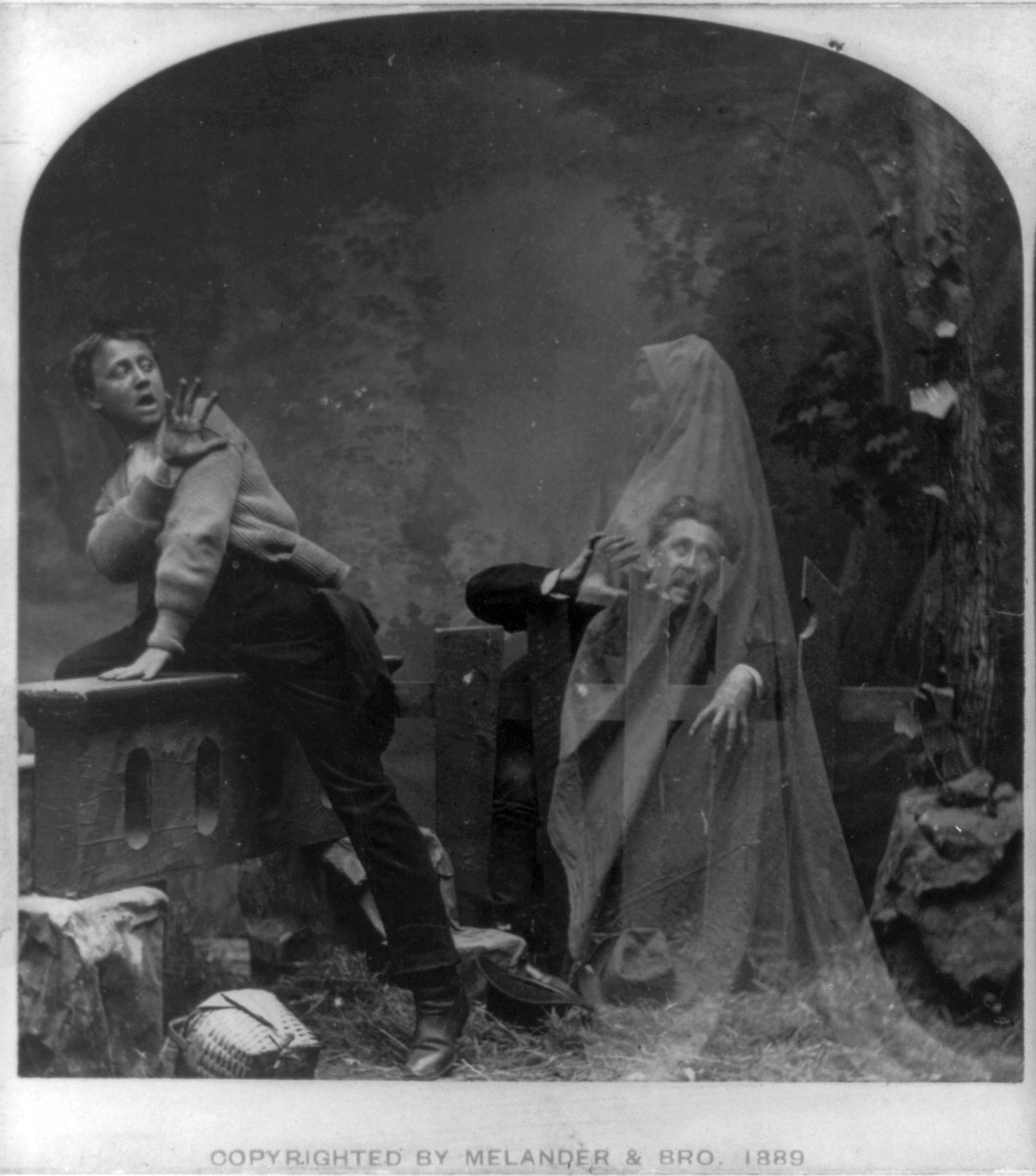
The Haunted Lane, Melander & Bro. (1889)
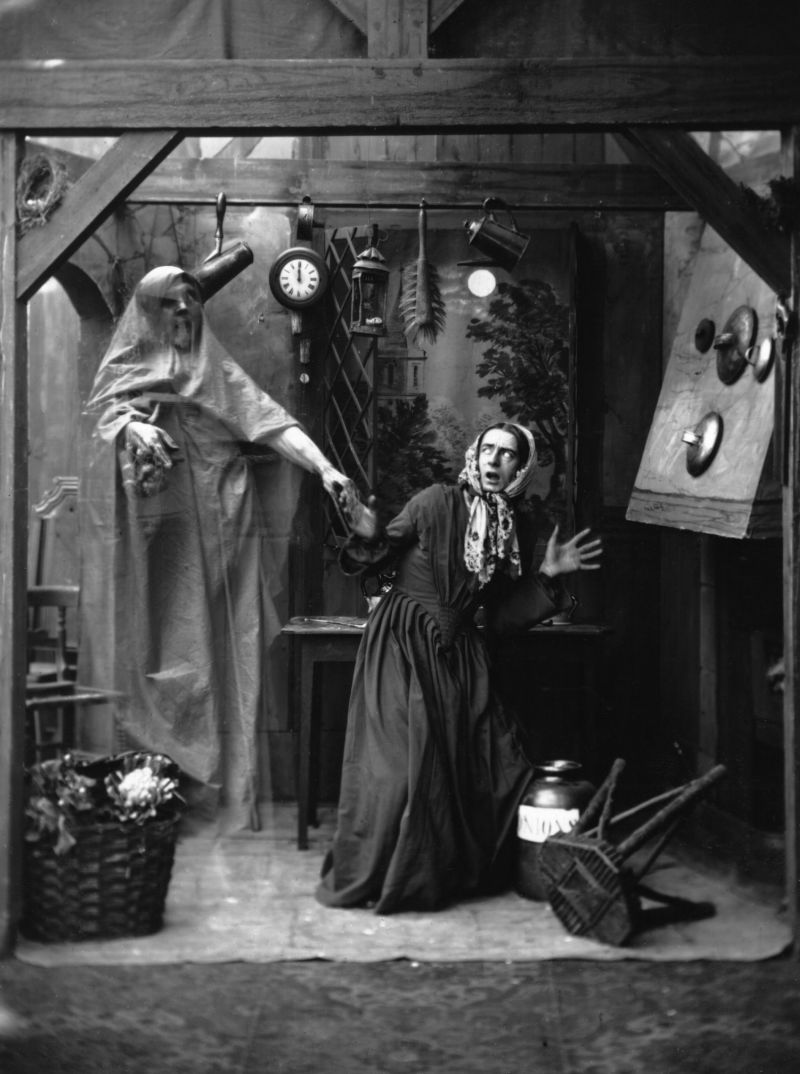
London Stereoscopic Society, circa 1865
As such, the trend of double exposure continues today in modern photography, as do more realistic/reliable forms of paranormal study and photography.
And while I don’t necessarily want to get into a discussion about the validity of a number of famous ghost photographs currently circling around the web, I’m certainly also inclined to offer what information I can on the history and methods of photography that might help you determine for yourself whether or not you believe what you see!
With that in mind, are there any photographs you can think of off the top of your head that have been lauded for being “true ghost photos,” when in reality they might have employed something like this? Leave it in the comments!
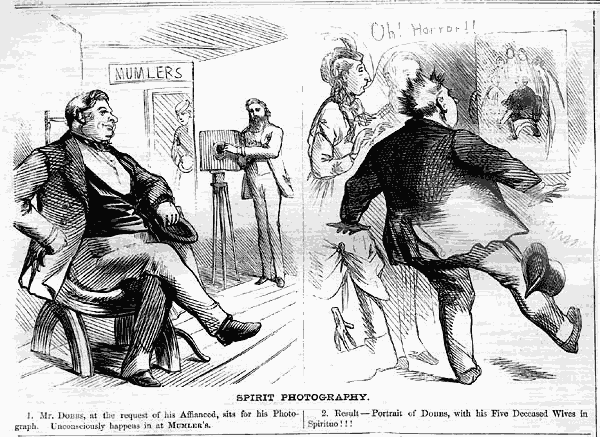
1. Mr. Dobbs, at the request of his Affianceed, sits for his Photograph. Unconsciously happens in at MUMLER’S.
2. Result– Portrait of Dobbs, with his Five Deceased Wives in Spirituo!!!
Want to read some more? Check out these sites!
Ghosts and the Machine: Occult Fun with Trick Photography
Please Enjoy These Spooky Victorian Ghost Photos
Creepy and Hilarious Ghost Photography
Kelsey graduated from Boise State University with a BA in Visual Arts, and is currently working as a freelance writer, while doodling anime on the side with one hand and petting cats with the other.
